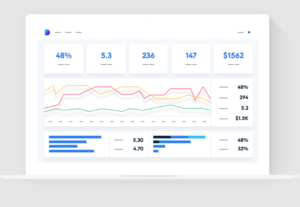Service departments are reeling from the Great Resignation. 40 percent of service advisers and 28 percent of technicians left their dealerships last year, according to a recent Automotive News article all about turnover issues.
“Fixing the pay issue is table stakes,” said Eliza Johnson, director at Carlisle & Co, who AutoNews interviewed about the findings of Carlisle & Co.’s 2022 Automotive Service Manager Survey.
For most service managers, however, fixing the pay issue is out of their hands. So what can be done within the fixed ops department to limit turnover and keep great talent growing?
Growth & advancement
Pay is just one piece of a service adviser’s or technician’s job, and of course, it’s a major factor in decision-making.
But opportunity for advancement may be a close second to compensation if a service department employee is weighing a potential job change.

We recently shared ways that managers can look at service advisor performance to help their team members grow.
In that article, we said that great service managers will “[identify] the key activities that contribute to business growth, elevate team leaders to institute best practices, then measure impact and plan continuous improvement.”
Putting this process into action might look like this:
– You notice a certain service adviser writes 10% more loaner car contracts than other team members, and they’re usually tied to higher RO values.
– You talk to that adviser and learn that they’re working with technicians to communicate to customers how soon some additional services will need to be completed, then offering a loaner vehicle as a way to “save some time down the road.” They say most customers who are just in for an oil change want to be in and out, but about 10% will take the loaner for a couple days.
– You ask your employee to share the strategy with the rest of the team in a short morning meeting, then keep working with other team members to refine the loaner “pitch.”
– At the end of the month, you see a rise in the number of loaner contracts written and in average RO value.
– To start the next month, you challenge the service adviser who led the team effort to write more contracts to now reduce the length of each loan, and guide the team strategy.
In that example, the service manager is setting the foundation for their service adviser’s career path within the dealership, and also giving the team the opportunity to set their own strategy toward a common goal.
Culture - it’s gotta fit
The example of growth planning above also demonstrates the kind of team culture — one focused on shared success and individual growth — that will encourage employees to stay with your dealership instead of looking at other opportunities.
Performance data is an important part of understanding how the culture affects work being done. As in the example above, you can use performance data to celebrate team members’ successes and create leadership opportunities for those employees who stand out.
Conversely, you can also use performance data to identify when certain employees are slipping and intervene. Talk with slipping employees to understand if they’re burned out and need some time off; if they’re not understanding an element of their role; or if they feel that the work isn’t a good fit for them.

Most importantly, ask them about elements of the team culture that encourage them or discourage them. Intervening with employees can help you get them back on track and contribute to the team’s results and a positive culture. Or, if it’s clear that it’s not a good fit, determining that as soon as possible can help you plan for a hiring and onboarding phase with a new employee.
Intervening with employees can help you get them back on track and contribute to the team’s results and a positive culture. Or, if it’s clear that it’s not a good fit, determining that as soon as possible can help you plan for a hiring and onboarding phase with a new employee.
What you get
Fixed ops is where your money is made, and service advisers are the employees that manage the most important customer relationships.
Planning for employee growth and celebrating outstanding team performance will personally connect your team to the service department’s success. That will make them more likely to experiment with new strategies that support overarching goals like increasing RO values, reducing costs, and keeping customers happy so that they become repeat customers.
Cultivating a team culture that celebrates success should also improve employee morale and impact the way that they work with customers. CSI scores can definitely benefit from a strong team culture, with employees who feel like they have management’s support and opportunities to grow.
In short, the obvious benefit of limiting turnover is limiting time spent on hiring and training. The less obvious benefits, however, can be bigger: higher revenues, happier customers, and a service department that’s more unified in reaching big goals.







